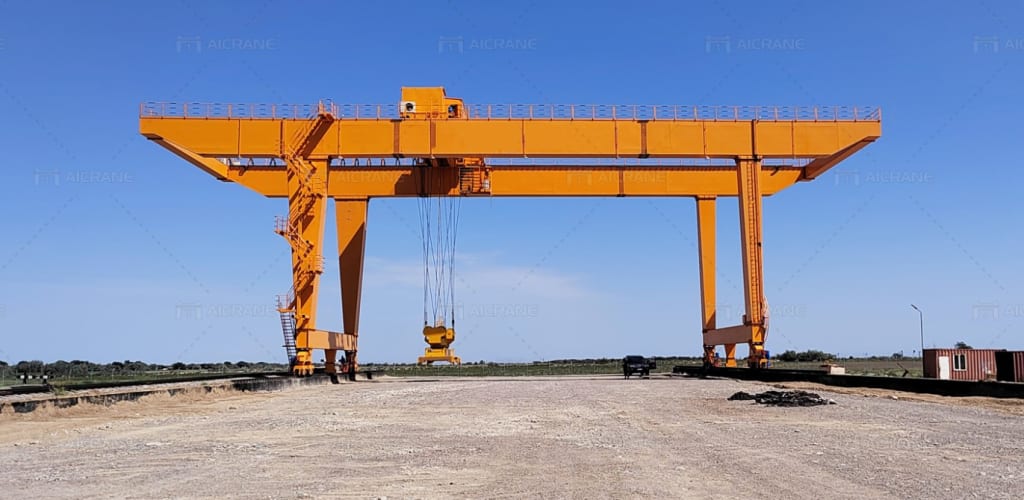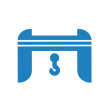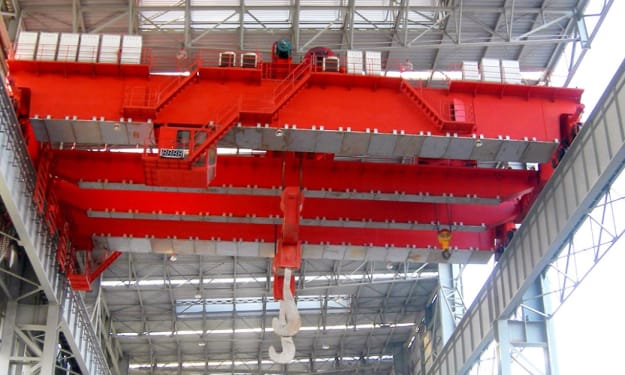Understanding What Is RMG Crane
Main Components and Their Operation

Rail Mounted Gantry (RMG) cranes are critical pieces of equipment in container terminals, rail yards, and other heavy industrial environments. They are used primarily for loading, unloading, and stacking containers. RMG cranes are favored for their ability to handle heavy loads efficiently and for their precision in stacking containers. This article delves into the main components of RMG cranes and explains how they operate.
Main Components of RMG Cranes
Gantry Structure
Main Beam (Girder): The horizontal beam that spans the width of the crane, providing support for the hoist trolley and load. It is usually made of high-strength steel to withstand heavy loads.
Supporting Legs: Vertical structures that support the main beam. These legs are mounted on rails and provide the RMG rail mounted gantry crane with stability. They often come with ladders or stairways for maintenance access.
Hoist Trolley
Trolley Frame: The structure that houses the hoisting mechanism and moves along the main beam.
Hoisting Mechanism: Comprises the hoist motor, drum, wire ropes, and hook. The motor drives the drum to wind or unwind the wire ropes, raising or lowering the load.
Trolley Drive System: A set of motors and wheels that allows the trolley to move horizontally along the main beam. The system ensures precise positioning of the load.
Rail System
Rails: Steel tracks laid on the ground along which the crane moves. The rails must be perfectly aligned and leveled to ensure smooth and efficient crane operation.
Rail Clamps: Devices used to secure the crane to the rails, especially during high winds, to prevent unwanted movement.
Control System
Operator Cabin: Enclosed space where the operator controls the crane. It is equipped with joysticks, buttons, and displays for real-time monitoring and control.
Remote Control: Some RMG container cranes are operated remotely, providing the operator with a safe distance from the crane while maintaining full control over its operations.
Automated Control Systems: Advanced RMG cranes are equipped with automation systems for precision handling and improved efficiency. These systems include programmable logic controllers (PLCs) and sensors for real-time data collection and analysis.
Power Supply System
Cable Reel System: Supplies power to the crane via a retractable cable. The system ensures that the cable is managed efficiently to prevent entanglement and damage.
Conductor Bar System: An alternative power supply method where the crane receives power from a fixed conductor bar installed along the crane’s path.
Safety Systems
Anti-Collision Devices: Sensors and alarms that prevent the crane from colliding with obstacles or other equipment.
Overload Protection: Ensures the crane does not lift loads beyond its capacity, protecting both the crane and the operator.
Emergency Stop System: Allows for immediate shutdown of the crane in case of an emergency.
Operation of RMG Cranes
RMG cranes operate through a series of coordinated movements, controlled by the operator or automated systems. Here’s a step-by-step look at their operation:
Start-Up and Initialization
Before commencing operations, the crane undergoes a series of checks to ensure all systems are functional. This includes verifying the power supply, control systems, and safety mechanisms.
The operator conducts a visual inspection of the crane and surrounding area to ensure there are no obstructions or hazards.
Positioning the Crane
The operator or automated system moves the crane along the rails to the desired position. This involves activating the gantry drive system, which propels the supporting legs along the rails.
Precision positioning is crucial, especially in container terminals where space is limited and containers need to be stacked accurately.
Hoisting and Trolley Movement
Once the crane is in position, the operator lowers the hoist hook to attach to the load (e.g., a container).
The hoisting mechanism is activated, lifting the load off the ground. The hoist motor drives the drum, winding the wire rope and raising the load.
The trolley drive system moves the hoist trolley along the main beam to position the load over the desired location.
Load Handling
The operator carefully lowers the load into place. Precision is essential to ensure the load is placed accurately, whether it’s being loaded onto a truck, train, or stacked in a storage yard.
After the load is set down, the hoist hook is detached, and the crane is ready for the next operation.
Shut Down and Maintenance
At the end of operations, the crane undergoes a shut-down procedure to ensure all systems are safely powered down.
Regular maintenance is conducted to check for wear and tear, ensuring the crane remains in optimal working condition. This includes inspecting the wire ropes, checking the motor systems, and ensuring the rails are in good condition.
Advantages of RMG Cranes
- Efficiency: RMG cranes can handle a high volume of containers quickly, making them ideal for busy terminals.
- Precision: Automated systems allow for precise positioning and stacking of containers, optimizing space usage.
- Safety: Advanced safety features protect both the crane and the operators, minimizing the risk of accidents.
- Durability: Built with high-strength materials, RMG cranes are designed to withstand harsh working conditions and heavy loads.
Conclusion
RMG cranes are indispensable in modern industrial and logistical operations. Their robust design, coupled with advanced control and safety systems, ensures they can handle heavy loads with precision and efficiency. Understanding the main components and operation of RMG cranes is crucial for maximizing their performance and ensuring safe, reliable operations. Whether operated manually or through automated systems, RMG cranes continue to be a cornerstone of industrial material handling.
About the Creator
Aicrane
Heavy lifting equipment supplier - overhead cranes, gantry cranes, winches, hoists, etc.
Website: https://steelmillcranes.com/
Enjoyed the story? Support the Creator.
Subscribe for free to receive all their stories in your feed.






Comments
There are no comments for this story
Be the first to respond and start the conversation.